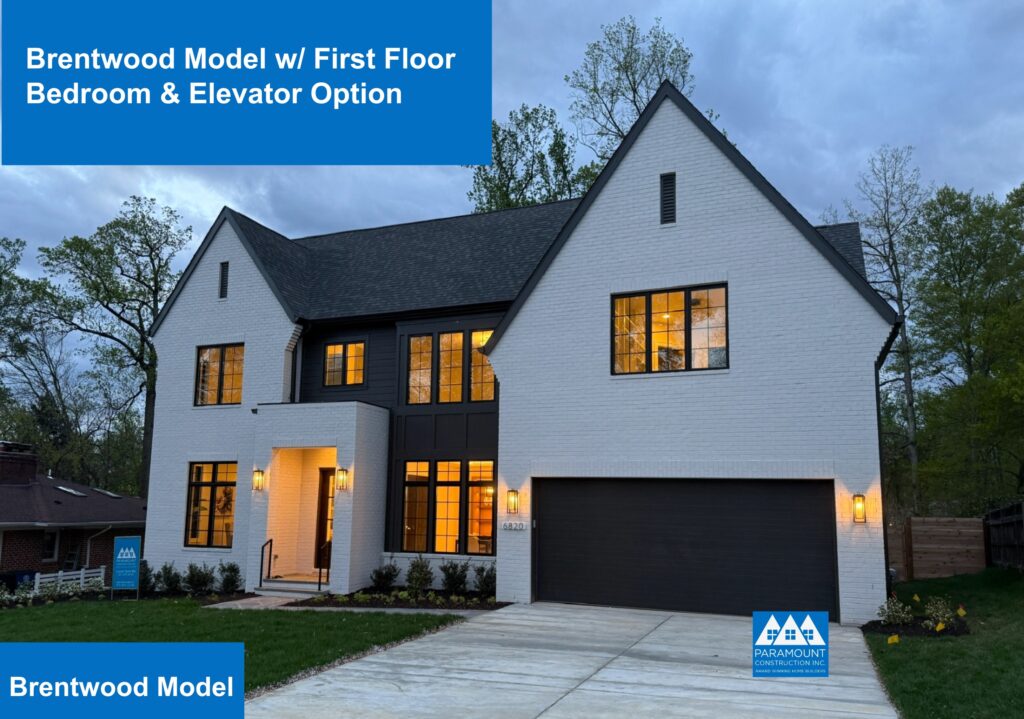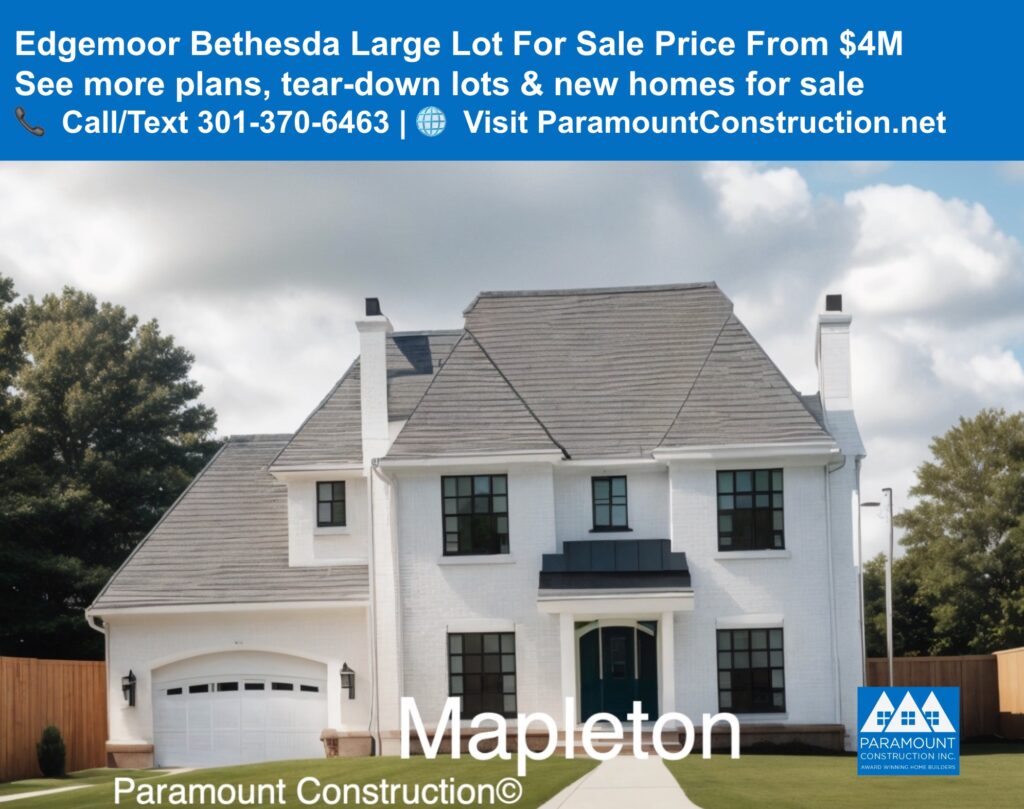Building Your New Home: Raw Land vs. Tear Down Lot – What You Need to Know
Pros and Cons of Building on Raw Land vs. Tear Down Lot

What is An Infill Building Lot?
An infill building lot is a piece of land that is located within an already developed area, rather than on the outskirts or in a rural area.
The property could have an existing older home on the land or it may not.
If the property has an existing home to remove then the property is a tear down building lot.
Therefore, if the property does not have an existing home on the land then it is a raw lot.
Most of the new home demand for our company is where the real estate price appreciation is the greatest.
Historically, this area has been inside the Capital Beltway (Interstate 495).
And the specific cities are:
- Arlington
- Bethesda
- Chevy Chase
- Falls Church
- McLean
- N.W. Washington D.C.
And in these areas, most properties we build new homes are tear down infill building lots.
Infill building lots are often found in urban or suburban areas, and sometimes are smaller and more compact than traditional building lots found in planned communities.
The term “infill” refers to the fact that these lots are being used to fill in gaps or empty spaces within an existing development, rather than being used to create new, standalone developments.
Infill building lots can be an attractive option for new home buyers, builders and developers who are looking to create new housing options in established areas. Infill lots can provide opportunities for new development in areas that may not have previously been considered for building
Tear Down Building Lots With An Existing Home Are More Common
Building a new home on an infill city building lot can be a great way to add to the density and vibrancy of an urban area.
In cities like Bethesda and Chevy Chase, Maryland, and Arlington and McLean, Virginia, finding a building lot with no existing home on it can be challenging, as the majority of buildable lots already have homes on them.
Can You Find Raw Land In Infill Areas?
It is uncommon to find a raw parcel of land in a dense urban area because most of the available land in these areas has already been developed.
Urban areas are characterized by high levels of population density and a concentration of buildings, infrastructure, and other development.
As a result, it is often difficult to find undeveloped land in these areas.
Additionally, the cost of land in urban areas is typically very high, so it is generally more cost effective for developers to build on land that has already been developed, rather than to try to find a raw parcel of land.
Infill Building With An Existing Home Saves Money
In these cases, it’s often best to choose a property with an old house that can be removed, as the existing utility connections can save a significant amount of money and make the building process easier.
One of the key advantages of having a property with an old house on it when building a new home on an infill city building lot is the savings on impact fees (Montgomery County Maryland are approximately $45,000).
Raw Lots Have Impact Fees
The municipality charges impact fees for developing raw land to cover the cost of bringing in new utilities.
These fees can be substantial, and they can add significantly to the overall cost of building a new home.
By selecting a property with an old house that can be removed, the cost of bringing in new utilities can be avoided.
The existing utility connections can simply be transferred to the new home, saving a significant amount of money.
In most cases, the savings from avoiding impact fees can be more than enough to offset the cost of removing the old house from the property (the existing utilities will still have to be upgraded, but, it will still be a net savings).
You can check Montgomery County impact fees here.
Easier Building Process
In addition to the cost savings, having a property with an old house on it can also make the building process easier.
The infrastructure for the utilities will already be in place, which can save time and labor costs.
Instead of having to dig trenches and lay new pipes and wiring, the builder can upgrade the existing infrastructure.
This can make the overall building process more efficient.
Another advantage of choosing a property with an old house on it is that it can make it easier to get building permits and approvals.
In many cases, the city or municipality may have already approved the use of the existing utility connections. This can streamline the approval process and make it easier to begin building a new home.
Tax Benefits?
There may also be some potential tax benefits of donating parts of the old home to charitable organizations. Talk to one of our new home consultants to learn more about this possibility.
Conclusion
In conclusion, overall, choosing a property with an old house on it when building a new home on an infill city building lot can be a cost-effective and efficient option.
The existing utility connections can save a significant amount of money, and the existing infrastructure can make the building process easier.
And the reality is, inside the Capital Beltway, there are no longer many building raw lots remaining.
Here’s another resource to read on the three steps you should take before purchase raw land or a teardown lot for your new home.
If you’re selling your existing home or tear down infill lot, contact us here. Sometimes we also work creative property trades with property owners.
If you are in the market for an infill teardown building lot for a new home, contact us here. We have the largest list of teardown lots and new homes in Arlington, Bethesda, Chevy Chase, Falls Church, McLean and NWDC.






